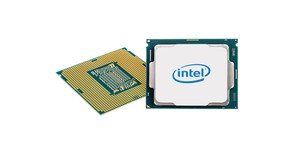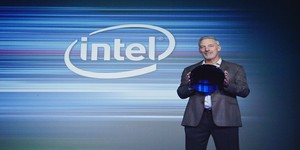
Intel's next-generation Cannonlake consumer-targeted processors could finally be making the leap from quad-core designs, according to hints offered by a current Intel engineer.
While Intel has products offering a varying number of processing cores - anything from single cores for the embedded market through to the 50-core Xeon Phi co-processor board - its most commonly used configuration on consumer desktops is a quad-core part with or without the HyperThreading technology that extends it to running eight simultaneous threads. Higher core counts, meanwhile, were reserved for enterprise and high-performance computing (HPC) products, along with the occasional enthusiast-centric part.
A slip of the finger by an anonymous Intel engineer, however, suggests that the company's 10nm Cannonlake family could be offered in hexa- and octa-core varieties. An unwise boast on the engineer's LinkedIn profile, spotted by finance site The Motley Fool, claimed a hand in Cannonlake system-on-chip (SoC) parts which integrated four, six, or eight processing cores with a Converged Coherent Fabric (CCF), described as acting like the Northbridge of an old-fashioned chipset setup. This phraseology has not been seen before from Intel, but matches that of recent job adverts asking for a 'Coherent Fabric Architecture Engineer.'
While the leak has been neither confirmed nor denied by Intel, such a move would help retain its edge over rival AMD. Intel's CPU architecture is generally regarded as being more efficient than AMD's, but AMD is forging ahead with the Heterogeneous Systems Architecture (HSA) which promises to blur the line between CPU and GPU resources - and AMD's GPU offerings are far more powerful than the integrated graphics Intel ships. Boosting the number of CPU cores on its next-generation products would allow the company to continue to tell software developers to concentrate on making the best use of CPU cores rather than looking to HSA and other general-purpose GPU (GPGPU) methods to boost performance.
Intel has not commented on the apparent leak, which has since been removed from the purported engineer's LinkedIn profile.
While Intel has products offering a varying number of processing cores - anything from single cores for the embedded market through to the 50-core Xeon Phi co-processor board - its most commonly used configuration on consumer desktops is a quad-core part with or without the HyperThreading technology that extends it to running eight simultaneous threads. Higher core counts, meanwhile, were reserved for enterprise and high-performance computing (HPC) products, along with the occasional enthusiast-centric part.
A slip of the finger by an anonymous Intel engineer, however, suggests that the company's 10nm Cannonlake family could be offered in hexa- and octa-core varieties. An unwise boast on the engineer's LinkedIn profile, spotted by finance site The Motley Fool, claimed a hand in Cannonlake system-on-chip (SoC) parts which integrated four, six, or eight processing cores with a Converged Coherent Fabric (CCF), described as acting like the Northbridge of an old-fashioned chipset setup. This phraseology has not been seen before from Intel, but matches that of recent job adverts asking for a 'Coherent Fabric Architecture Engineer.'
While the leak has been neither confirmed nor denied by Intel, such a move would help retain its edge over rival AMD. Intel's CPU architecture is generally regarded as being more efficient than AMD's, but AMD is forging ahead with the Heterogeneous Systems Architecture (HSA) which promises to blur the line between CPU and GPU resources - and AMD's GPU offerings are far more powerful than the integrated graphics Intel ships. Boosting the number of CPU cores on its next-generation products would allow the company to continue to tell software developers to concentrate on making the best use of CPU cores rather than looking to HSA and other general-purpose GPU (GPGPU) methods to boost performance.
Intel has not commented on the apparent leak, which has since been removed from the purported engineer's LinkedIn profile.

MSI MPG Velox 100R Chassis Review
October 14 2021 | 15:04








Want to comment? Please log in.